Source: http://www.insurancejournal.com/news/national/2015/08/21/379241.htm
Among the lessons to be learned from Hurricane Katrina are that communities and all stakeholders should prioritize flooding as the greatest risk, devote more resources to preventive measures rather than post-event disaster relief, and address current infrastructure weaknesses, according to a comprehensive white paper from a global insurer and leading university.
Building resiliency is a complex challenge that requires actions from governments, business owners, non-governmental organizations and individuals, say the authors of Beyond Katrina: Lessons In Creating Resilient Communities, released by Zurich Insurance and the Wharton Risk Center at the University of Pennsylvania.
The white paper outlines flood resilience strategies implemented since Katrina deluged New Orleans and the surrounding Gulf Coast region. At the same time, Beyond Katrina acknowledges that cities are still at risk in the face of extreme weather.
The report offers disaster financing suggestions including using risk-based flood insurance premiums, low-cost home improvement loans, and means-tested insurance vouchers.
National Priority
Katrina delivered a devastating blow: it took more than 1,800 lives and cost an estimated (in 2015 dollars) $127 billion. The storm generated the largest aggregate insurance loss in history of insurance—$41.1 billion and more than 1.7 million claims. The National Flood Insurance Program (NFIP) had to borrow $18 billion from the Treasury to cover flood-related claims from Katrina and other storms in 2004 and 2005.
Mike Foley, CEO of Zurich North America Commercial, said the insurer hopes that Beyond Katrina will “act as a catalyst for the discussion and collaboration necessary at a corporate, policy and community level to improve the current state of resiliency in the United States and abroad.”
“As the past decade has shown, we have entered a new era of catastrophes,” said Dr. Erwann Michel-Kerjan, executive director of Wharton’s Risk Management and Decision Processes Center. “Either we pretend they will not happen to us, or we join forces to make resilience a national priority. This requires new knowledge to help design measurable solutions.”
“Reducing the exposure to damage before disasters occur is one of the most important lessons to take from Hurricane Katrina,” said Howard Kunreuther, professor and co-director of Wharton’s Risk Management and Decision Processes Center. “Thinking through these issues after the fact only ensures that we struggle more, pay more, and sow the seeds for even more costly efforts in the future.
Top Goals
According to the Beyond Katrina white paper, there are five main issues communities and stakeholders should strive to address:
- Infastructure gap: People and property remain at risk because many buildings, bridges, dams and levees are incapable of withstanding severe windstorms and flooding.
- Prioritization of flooding risk: Wind wasn’t the major factor in Katrina’s devastation—it was the flooding from the rain and storm surge. Flooding affects more people globally than any other natural hazard, and flood-related losses are increasing because more people are moving to the coasts.
- Pre-event risk reduction over post-event disaster relief: Neither governments nor the private sector can afford to keep funding the financial losses that occur because businesses, homes and critical infrastructure are unprepared. Making the right investments now can lessen the severe losses later.
- Resilience measurement: The ability to measure resilience can help determine the effectiveness of investments by public entities, private companies and non-governmental organization as well as determine progress over time. Zurich and Wharton have begun to create a community-based flood resilience measurement tool as a first step in this direction.
- Improved disaster financing: How to pay for pre-disaster preparation and post-disaster recovery? Studies by the Wharton Risk Management and Decision Processes Center offer insights into risk-based insurance premiums and means-tested insurance vouchers, which can take advantage of market signals and address affordability of risk-based disaster insurance.
Insurance Issues
Most people affected by the flood in New Orleans were uninsured, according to the report, which cites a New York Times study that found that in the Louisiana parishes affected by Katrina, the percentage of homeowners with flood insurance ranged from 58 percent in St. Bernard to 7 percent in Tangipahoa. Also, few homes or public buildings were designed to deal with storm surges.
According to the authors, homeowners who did have insurance were lulled into feeling they were safer than they really were because premiums were low.
“The lessons of Katrina call for a better balance between pre- and post-disaster spending to help reduce the devastating impact of severe storms. There is growing momentum across the United States to address the weather resilience gap. Yet the pressing question remains: What is the best formula to pay for these resilience initiatives?” the white paper asks.
The report suggests that risk-based insurance pricing can foster community resilience by alerting residents and businesses of the risk their property face from future hurricanes like Katrina or Sandy, while at the same time reducing premiums for those who invest in loss-reduction measures.
The authors acknowledge that many residents in high-risk areas can’t afford the cost when premiums reflect risk. They suggest property improvement loans could be used to fund building changes to mitigate wind and storm surge-related losses. The reduction in the price of insurance coverage due to the improvements might, over time, fund the entire cost of the loan, according to the authors.
The report suggest that means-tested vouchers could be used to help property owners and businesses pay for such a loan program and higher insurance premiums.
It also suggests that the flood insurance could be required and linked to mortgages and that building codes be enforced. Making the community more resilient to disasters will increase property values over time, the authors say.
The authors also endorse the National Flood Insurance Program’s Community Rating System (CRS) established in 1990 under which communities earn discounts in their resident’s premiums by undertaking flood risk awareness and protection measures. More than 1,200 U.S. communities—representing two-thirds of the NFIP policies-in-force across the country—are active in the CRS program..
“Significant investments have been made since Katrina to address resiliency goals, but much remains to be done,” write the authors.
Sources: Zurich and Wharton
The Zurich-Wharton White Paper:
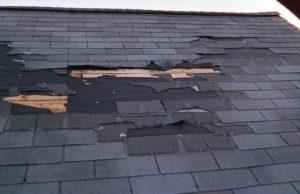 Properties in Florida have a greater propensity to have roof damage from wind or hall. If you have lived in Florida for several years, you may have experienced storms that could have potentially damage to your roof. Luckily, in many cases storm damage to your roof will be covered under your property insurance policy.
Properties in Florida have a greater propensity to have roof damage from wind or hall. If you have lived in Florida for several years, you may have experienced storms that could have potentially damage to your roof. Luckily, in many cases storm damage to your roof will be covered under your property insurance policy.

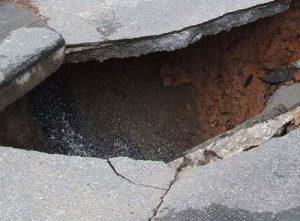
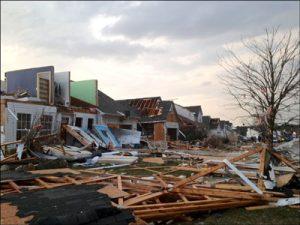
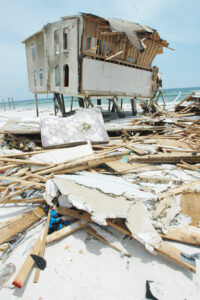 Knowing what insurance policy to purchase can be quite a task if you are unfamiliar with the market. As one of the largest assets Americans own, it is recommended that you carry adequate coverage against a loss to your home.
Knowing what insurance policy to purchase can be quite a task if you are unfamiliar with the market. As one of the largest assets Americans own, it is recommended that you carry adequate coverage against a loss to your home.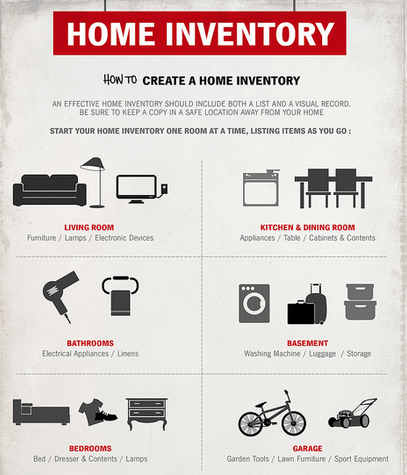
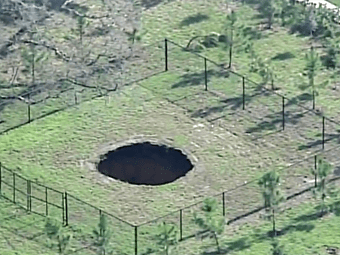 Just last month, Hillsborough County gave two Valirco families three minutes to get out of their homes. This is shortly, after a 6- foot deep sinkhole opened between their homes.
Just last month, Hillsborough County gave two Valirco families three minutes to get out of their homes. This is shortly, after a 6- foot deep sinkhole opened between their homes.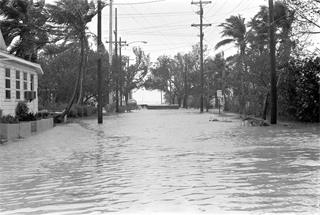 Kevin McCarty, Florida Insurance Commissioner and top regulator voiced his concern over federal flood insurance rates in a letter to state Senator Jeff Brandes. McCarty stated they were “unfairly discriminatory” and will ask U.S. officials for data that may possibly help private companies set rates and compete. “The averaging together of zones with different costs and charging one rate would be considered unfairly discriminatory from an actuarial perspective which would not pass scrutiny under Florida law.”
Kevin McCarty, Florida Insurance Commissioner and top regulator voiced his concern over federal flood insurance rates in a letter to state Senator Jeff Brandes. McCarty stated they were “unfairly discriminatory” and will ask U.S. officials for data that may possibly help private companies set rates and compete. “The averaging together of zones with different costs and charging one rate would be considered unfairly discriminatory from an actuarial perspective which would not pass scrutiny under Florida law.” The Consumer Electronics Association is estimating that consumer drone purchases will have a 50% increase in sales this year, meaning there will be an additional 300,000 drones in the skies.
The Consumer Electronics Association is estimating that consumer drone purchases will have a 50% increase in sales this year, meaning there will be an additional 300,000 drones in the skies.
 A new survey found that less than one-third (29%) of insurance customers are satisfied with their current providers. At the same time, the number of customers who believe that most insurance carriers are the same in terms of their products and services jumped 50% in the last year, to 21% in this year’s survey from 14% in a similar survey last year. The survey is based on Accenture’s Global Consumer Pulse Research, which included more than 13,000 P&C and life insurance customers in 33 countries. The survey also showed only one in four (27%) has a high estimation of their insurance providers’ trustworthiness, and nearly one in four (23%) said they would consider buying insurance from online service providers, including technology giants.
A new survey found that less than one-third (29%) of insurance customers are satisfied with their current providers. At the same time, the number of customers who believe that most insurance carriers are the same in terms of their products and services jumped 50% in the last year, to 21% in this year’s survey from 14% in a similar survey last year. The survey is based on Accenture’s Global Consumer Pulse Research, which included more than 13,000 P&C and life insurance customers in 33 countries. The survey also showed only one in four (27%) has a high estimation of their insurance providers’ trustworthiness, and nearly one in four (23%) said they would consider buying insurance from online service providers, including technology giants.